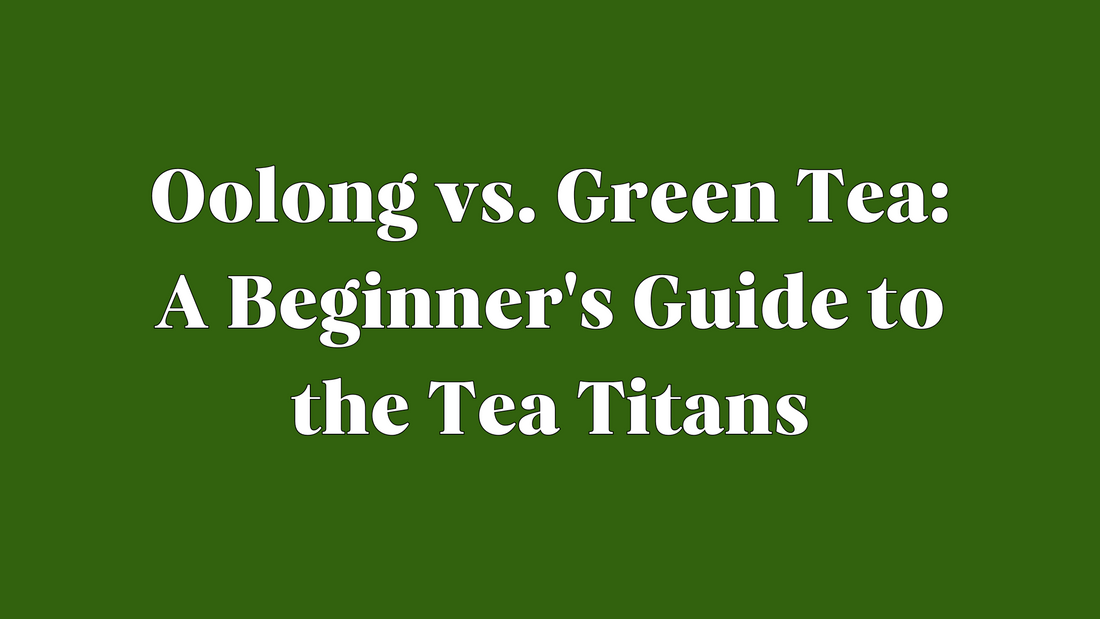Welcome to the intriguing world of tea, where the leaves tell stories, and each brew is a new chapter. Today, we're unravelling the tale of two tea titans: Oolong and Green tea. Whether you're a budding tea enthusiast or just someone curious about your cup, let's dive into the differences between these two beloved brews.
Flavor: A Tale of Two Tastes
Green tea is often lauded for its delicacy and subtlety. It offers a range of flavors, from sweet and grassy to slightly astringent and bitter. It's the kind of tea that seems to hold the freshness of spring within its leaves. Drink it, and you might just feel like you're wandering through a lush, green field—no hiking boots needed!
On the other side, oolong tea is a charismatic cousin with a more complex personality. It can vary from light and floral to dark and roasty, sometimes all in the same session if you're attentive to the brewing time. Oolong is the Janus of teas—always presenting two faces. It's the kind of tea that refuses to be pigeonholed, making each cup a surprising narrative.
Oxidation: Oolong's Middle Ground
Oxidation is the process that decides whether your tea will wake up feeling like green tea or morph into bolder black tea. Green tea is made from leaves that prevent oxidizing much at all. Green tea leaves are heated almost immediately after picking to kill the enzymes that cause oxidation. This process retains their green color and contributes to their fresh, subtle flavors.
Oolong tea, however, is in the middle of the oxidation spectrum. It can be lightly oxidized (20-40%) or up to about 70%, which gives it a wide range of potential flavors—from floral and light to rich and chocolaty. This partial oxidation process is an art involving precise timing and conditions to coax the leaf into revealing its desired character.
Health Benefits: More Than Just a Hot Cup
Both oolong and green teas are packed with antioxidants, those heroic compounds that battle the free radicals in your body, potentially reducing your risk of various illnesses. Green tea steps into the spotlight with its high concentration of a particular antioxidant known as EGCG, which has been studied extensively for its potential to fight everything from heart disease to cancer.
Oolong tea might not have as much EGCG as green tea, but it's heavy in other areas. Some studies suggest that oolong can be particularly effective at boosting metabolism and aiding weight loss, more so than green tea. It also holds its own in the antioxidant arena, offering a robust defence against bad cholesterol and dental plaque.
Brewing: Steeped in Tradition
For brewing green tea, think gentleness—the water around 80°C will coax its best flavours without drawing out the bitterness. It's like waking someone with a gentle nudge rather than a brass band. Steep for 2-3 minutes, and you'll have a just right cup.
Oolong tea enjoys a bit more flexibility. The water temperature can be hotter, around 90°C, and depending on how strong you like your tea, you can steep it from 1 to 5 minutes. Oolong is also famous for its ability to be re-steeped multiple times, each brew telling a new part of its story.
Conclusion: Which Brew Are You?
Choosing between oolong and green tea is as complex as selecting your next Netflix binge. Each has its virtues and its unique charm. The best part of being a tea drinker today is that you don't have to choose. Each tea has its moment; part of the fun is discovering which moments belong to which tea. So, brew, sip, and enjoy the journey through the leaves. Who knows what secrets you'll uncover in your next cup?


